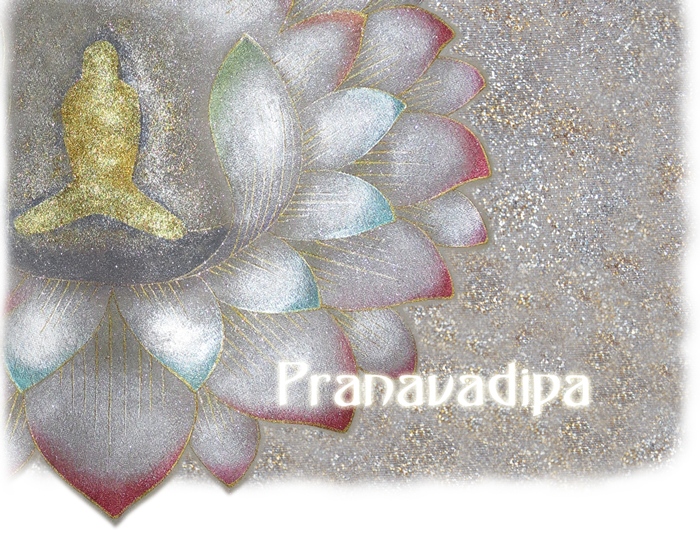
Vol. 1
Teachings of Shri Mahayogi:
• Truth is One
• Missionary Work and Applying Practice and Discipline
• New Wine for New Bottles
• Satori is the Highest Gift to the World and Others
• See Atman in Everything
* * * * * * *
Teachings of Shri Mahayogi:
Truth is One
Translation of Satsangha
February 15, 2011
The Ashrama, Kyoto
MASTER: Since the Truth is universal, the manifestation of Truth must be universal. What is important is that the things that have been practiced in the tradition [of India] must be practiced outside of it. And so it happened [that I was born here in Japan], so that you can all prove its universality in Japan, in Western countries, or in various other places.
Especially when it comes to the ancient religions that have existed since olden times, as Shri Ramakrishna said, their essence is the same. They must ultimately point toward the very same state. But, be that as it may, those who realize this are rare, and the majority of people adapt these religions as they see fit. If the Truth exists—or rather, since all religions are supposed to be based on the Truth, the Truth must exist, and people believe that the Truth exists—if that be the case, then, just as the sky or the ocean is without borders, the Truth must be one and the same. If one feels a sense of superiority in one’s own religion, or vice versa, if one excludes any other religions, it is as if one were killing one’s own religion. Therefore, Yoga, right from the outset, ignores any dogma or ritual that only belongs to a specific religion or a specific sect. The whole of Yoga, from the beginning to the end, is to practice based on the Truth, which is universal, and to attain the perfect realization of the Truth. Therefore, it is closely related to that essence of all religions, and it must be what they have all been striving for as well. If they all were to act in this way, [disregarding dogma and ritual and practicing based on the Truth], conflicts and quarrels between religions and discord among races, ethnicities, cultures, or any other groups, would disappear. Still, those conflicts do have to be resolved... But in order to solve these issues, it will not be sufficient to work only from within the history and tradition [of religions, even if they have lasted] for several thousands of years. The proof of the universality of this essence that can be found in all religions must be demonstrated from outside circles. Truth is not Truth merely due to the fact that it is in accordance with the sacred scriptures, rather, the sacred scriptures must be in accordance with the Truth. Those alone who can prove this must be living beings, not books.
back to top
Missionary Work and Applying Practice and Discipline
Translation from Satsangha,
January 19, 2008
The Mahayogi Yoga Ashrama, Kyoto
MASTER: The era in which Swami Vivekananda visited America and Europe was the end of the 19th century, a time in which Christianity was prevalent in Western society in general. Nevertheless, he took up the great mission of propagating the Truth for the first time to those who had no knowledge of other religions, let alone the [universal] Truth. Truly, his deeds were those of a great hero, works of unprecedented scale.
What was noteworthy about his work, after all, was that he made so great an impact, like that of a thunderbolt or a flash of lightning [in the way he taught] the Truth; and thereby he sought to shake the Christian world, which was gradually becoming impoverished, and lead it toward the real Truth, or true religion. He took the same approach in his public lectures, and he also held gatherings exclusively for ardent disciples or aspirants in which he would give them in-depth teachings and guidance. You can glimpse parts of these teachings in The Inspired Talks, the records that were made at Thousand Island Park in upstate New York. Of course, meditation must have been taught there. There probably wasn't any practice of the asana (postures) of Hatha Yoga1 there. Yet I am sure that he certainly taught meditation as practiced in the seated position, so asana (meaning sitting posture) was practiced in that sense. Of those who attended, some became renunciates as swami, and later, through the establishment of the Vedanta Society, Sanatana Dharma (the Eternal Truth) came to be conveyed to western society.
Afterwards, after the dawn of the 20th century, Paramahansa Yogananda and other swami propagated the Truth. And after World War II, the method of practice which was central to the Hatha Yoga of the Sivananda system became popular. Viewed from the whole picture of Yoga, the wide extent to which it spread by such propagation marked a positive phase, and yet the popularization of Hatha Yoga also gave rise to a preoccupation with the physical body, the material aspects, such as physical health and beauty. What is currently popular in the world today, or what is believed to be Yoga, is a practice that has asana at its center. In my case, interestingly enough, because I mastered asana on my own quite spontaneously when I was young, with my experience of asana I am trying to guide Yoga back to its origins. (Shri Mahayogi laughs.) To put it simply, asana is merely an introduction to Raja Yoga; it is, so to speak, one rung on the ladder to Satori. And you need to place your foot on the next rung as quickly as possible. And then you need to keep on ascending until you reach the rung of the eternal Truth, Sanatana Dharma. That is why I am working on correcting the current understanding of asana, which is misunderstood by most people. Whether it be in Japan or in America or in Europe, those who attend our classes never say anything or seem to be much concerned about how much slimmer they become (laughing). Nor do they say much about the physically-related aspects such as, “I have become healthy.” Rather, they speak about the impressions they have of their sense of spiritual uplift. You see, the asana that we practice might appear to be the common asana performed at any of the centers, but it is clear from the stories of their experiences that the substance of this practice is totally different.
1 Yoga that is centralized in physical training.
back to top
* * *
New Wine for New Bottles
Translation from Satsangha,
January 19, 2008,
The Mahayogi Yoga Ashrama, Kyoto
MASTER: In the old days, being single and absorbed in self-discipline in an environment completely disconnected from the troubles of everyday life was considered to be the orthodox style. However, in this age, it is so hard to live in such an environment, even though you may wish to. It is probably the same even in India. Our current situation is that the world has become more urban, societies are organized, and you need to adapt your life accordingly. The system or institution of marriage, or style of life, has changed. It is said that Yoga can be attained regardless of such conditions as whether you are single or married. So, practice and prove that Yoga is possible within any circumstances: that is your mission. Otherwise, Yoga will not be understood by many in the future. “No, they were special cases,” or “They had good situations,” [is what people will say]... On the contrary, we can never say, “They lived in a better age for that,” when we look at practitioners or Awakened Beings, such as the ancient yogi or Buddha. These are nothing but excuses and evasions. Since Truth never changes, and Truth certainly wins out in any circumstance whatsoever, I think that it is important to prove it no matter what era you may be living in. I think that you, each one of you, are carrying it on your shoulders. Well, I was already awakened around junior high or high school age. That proves that even a child can become awakened. Since it is the inherent nature of all people, it must be so.
back to top
* * *
Satori is the Highest Gift to the World and Others
Translation from Satsangha,
March 16, 2002,
The Mahayogi Yoga Ashrama, Kyoto
MASTER: From my early childhood, I might not have been the ideal child they wanted me to be; however, quite suddenly it occurred to me what the highest filial piety toward my parents should be. Listening to them and following their will, living up to their expectations; these could be said to be examples of the filial pieties toward one’s parents. And, of course, not causing trouble in society or achieving success could fall into that category as well. Nevertheless, these things never crossed my mind at all. I thought that the highest filial piety must be to become Enlightened. Because of that certainty, no matter how they preached to me, no matter how much I continued to not be the way they wanted me to be, nothing bothered me. I believe that the greatest gift, not only for parents but for all others as well, is nothing short of becoming Enlightened. Therefore, I think that the same can be said of one’s wife, one’s husband or one’s child.
back to top
* * *
See Atman in Everything
Translation from Satsangha,
November 26, 2011,
The Mahayogi Yoga Ashrama, Kyoto
Niranjan: I confess that what is most difficult for me is to live in daily life and to be around people. I do not want to waste my life away. What is lacking in me is faith. What I would like to ask you is how I can be connected to you. I have not been able to see Atman in everything. What can I do?
MASTER: I just recalled one story about Swami Vivekananda. Before he departed for America, he was wandering through India. Once, when he paid a visit to a certain Maharaja, a magnificent feast was held. He did not attend the feast thinking that a sannyasin (renunciate) should not be present at such feasts, so he shut himself in his room. Then he heard singing from far away. The verse was something to the effect of: “Please do not see my poor form, instead please see my essence.” These words really struck home. In India, it is said that entertainers are considered to be of a lower caste. In terms of worldly conditions, she was of a low class, yet she sang with a pure heart and with all her prayers. He later said that he was so moved by that song that he felt as if the scales had dropped from his eyes. Even a person like Vivekananda, who was a giant, experienced such things. So, you must give your best effort—effort upon effort upon effort—to try to see the essence [in all.] Everything is Atman. Dance, the work which you are engaged in right now, if you trace it back to its roots, it was born out of the action that is most connected to God, the act of offering. Remember this story of Vivekananda and see Atman in everybody you come across in the city. And if I can add one more thing, I am always with you.
back to top
Pranavadipa Home
Mahayogi Yoga Mission Main Website
Terms and Conditions
©2015 MAHAYOGI YOGA MISSION, Inc.
Copying, printing, faxing, sharing or emailing is prohibited.
